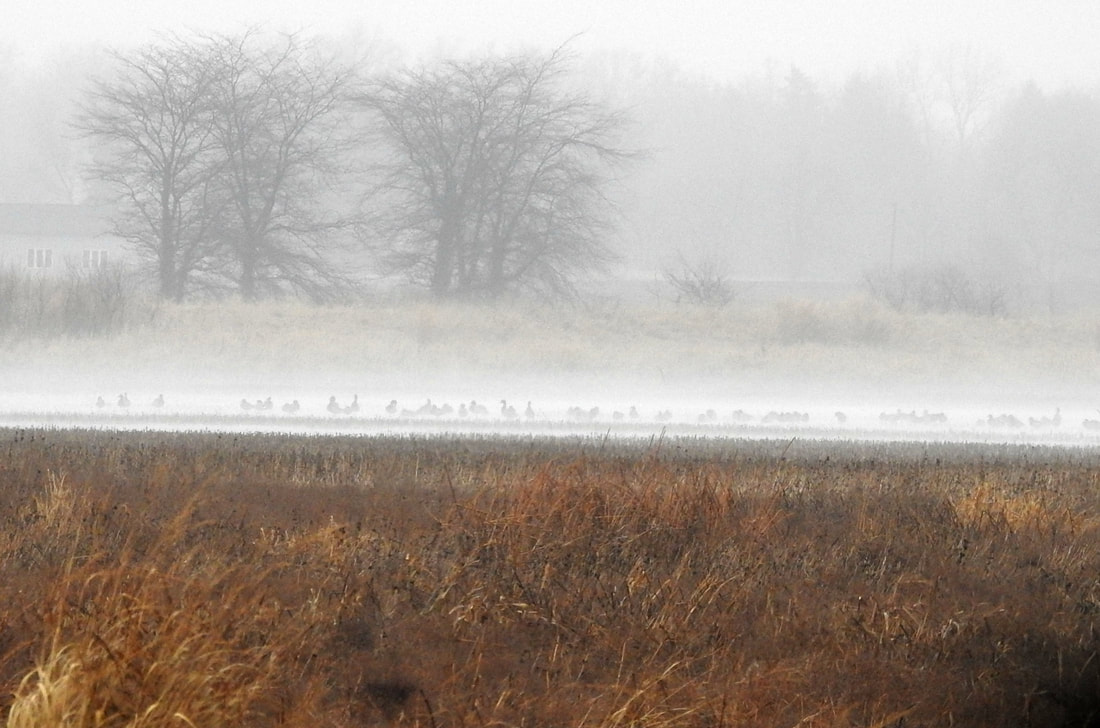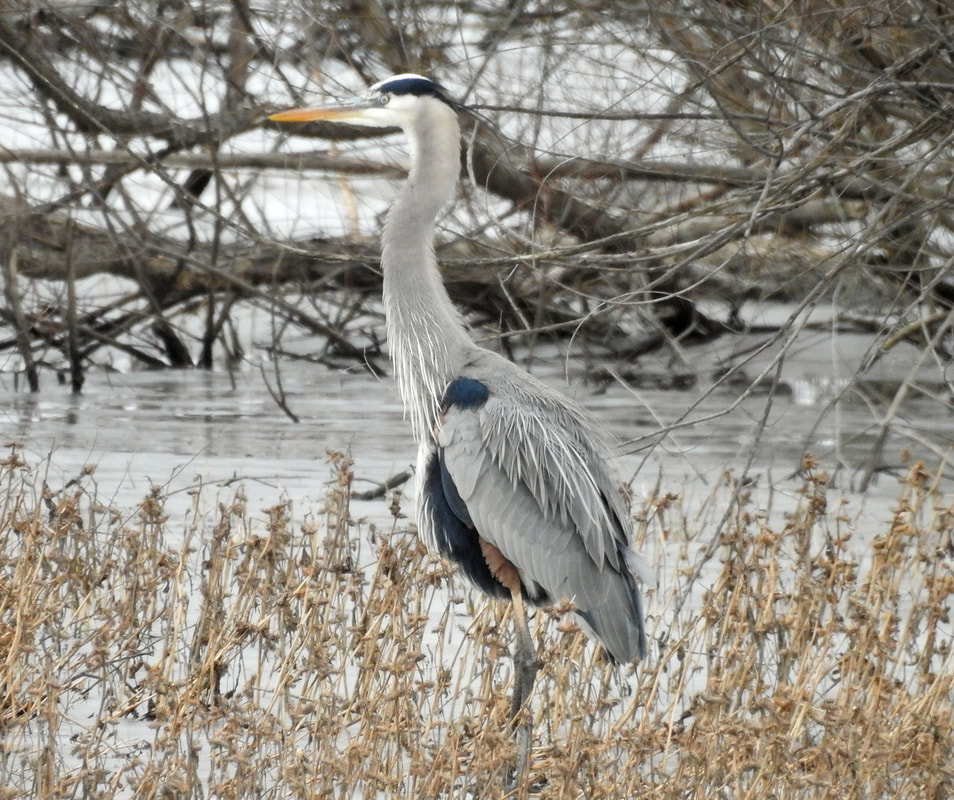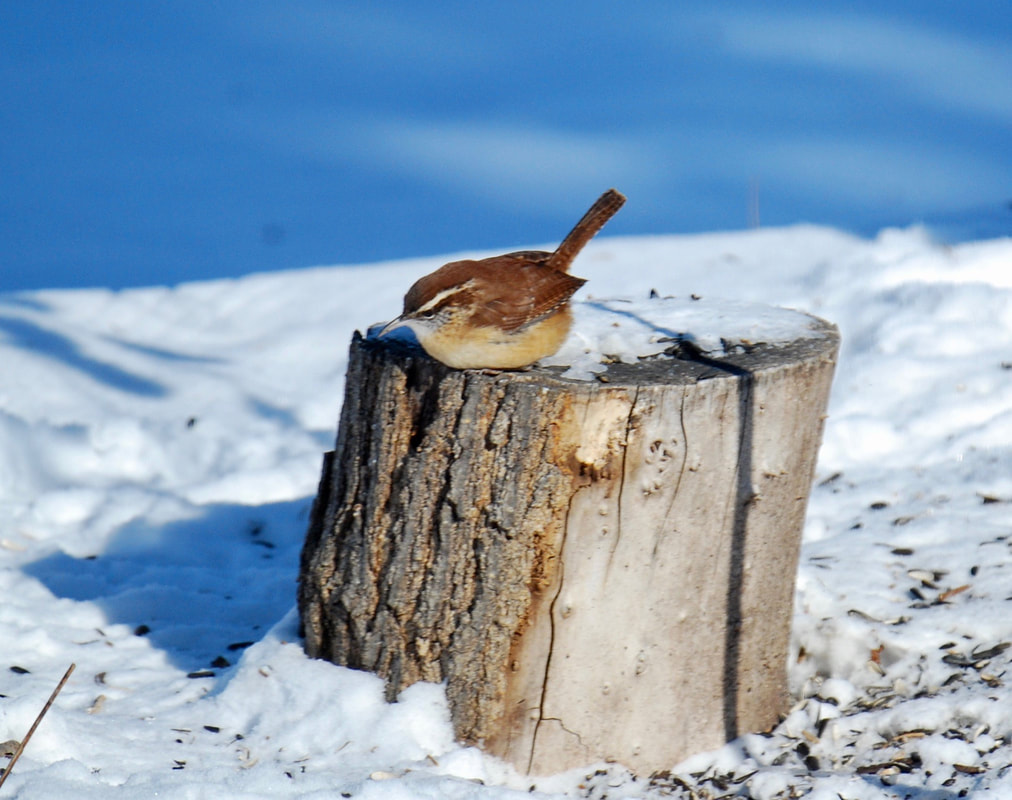|
Friends member Kimberley Roll is a popular blogger with her nature hikes at the Limberlost Territories in southern Adams County (Geneva) and northern Jay County (Bryant). Join her as she takes you on a special February hike. Mallards in the Loblolly Creek in southern Adams County. Juvenile bald eagle checking out the Geneva nest. This is before the adult pair were nesting. Wild turkey which would have been our national bird if Benjamin Franklin had his way. Bald eagle bathing at the Loblolly Marsh. Rough-legged hawk. Two to three of these hawks have been seen at the Loblolly Marsh. Fog over the Limberlost Swamp Wetland Preserve. Three of the resident deer that like walking the Deacon's Trail at the Limberlost Swamp Wetland Preserve. Short-eared owl at dusk at the Limberlost Swamp Wetland Preserve. Great Blue Heron. There are a few that stay around here in the winter. Muskrats are a common site at the wetlands and in the creeks. Red-tailed hawk Kestrel. They are commonly seen at the Loblolly Marsh and the Limberlost Swamp Wetland Preserve. We hope that Kimberley Roll's hike has inspired you to explore Limberlost. This is a basic map of the 1800 acres that are preserved.
SANJO Christmas Bird Count By Terri Gorney On January 1 Limberlost hosted the SANJO CBC. SANJO stands for Southern Adams, Northern Jay, and Ouabache. Randy Lehman came up with this name to represent the area that the circle covers. This circle was created for the National Audubon Society. It came out of the old Adams County CBC that had a 40 year history. Limberlost hosted this event for the 5th year. It had to be the coldest on record for this area with temperatures -4 to -9 degrees in the morning. That did not deter a record number of 27 field, feeder and property counters from helping. We had participants from Mississinewa Audubon Society, Robert Cooper Audubon Society and Stockbridge Audubon Society and local residents. A total of 48 species were record, 2171 individuals. This was the 118th Christmas Bird Count by the National Audubon Society. This count relies on volunteers. It is an early winter bird census. This count gives an idea of bird populations and how they have changed over the years. Some species have prospered and others have not. In our area, habitat restoration and creation of the Limberlost Territories and Ouabache State Park have helped the birds to thrive. We now have a year round population of bald eagles and northern harriers and short-eared owls as regular winter residents. Some of the best birds were the bald eagles, short-eared owls, rough-legged hawks, northern harriers, greater white-fronted geese, snow buntings, Lapland longspurs, Carolina wrens, brown creepers, yellow-bellied sapsucker, redheaded woodpeckers and pileated woodpeckers. We had a record numbers of horned larks, Lapland longspurs, snow buntings, and American tree sparrows this year. We met at the Limberlost Visitor Center for a chili carry-in lunch. We had a feast along with great conversation. It is a great way to start the new year. A big thank you to all that participated in this event. In my opinion, it is the volunteers that make this count special. A few of our volunteer had "lifers" - birds they had not seen before. There is always room for more counters for January 1 2019. You do not have to be an expert birder to help with this count. Larry Parker was the compiler before me. Larry has a long history of birding in Adams County and helping with bird counts. He still helps with the counts. The Indiana Audubon Society's May Count will be held May 12. This count will be for Adams County. Anyone interested in helping with this count are welcome. We can always use feeder counters, field counters or people who want to count birds on their farms or properties. Some of our counters enjoying lunch. Carolina wren by J Swygart Waterfowl on the old gravel pit in Geneva. It was one of the few places with open water.
Most Elusive Moth by Gene Stratton-Porter Once when I was a child I brought a Cecropia moth home and kept it for a short time, but not until twenty years afterward did I have one at close enough range to take a picture. I did not see it until one summer morning when a little boy brought me a fine specimen in a pasteboard box with a perforation in the top. I took it out, and found it so numb with cold that it could not cling to a twig. I knew that these moths lived only a short time, and, fearing that this one was near death, focused the camera on a branch and tried again to make it cling. The fourth effort was successful, though the moth crept so far away before it settled that I had to change the shutter. It took less than a minute, but when I looked around my fine Cecropia was sailing over the top of the elm trees near the orchard. Some months later, after one of the most trying days I ever spent afield, I came home to find a Cecropia slowly working its wings up and down on the top step of the cabin. I reached for my net. The moth for which I had waited twenty years was mine. Note: People in Geneva would bring Gene moths, caterpillars and birds. She would pay them for their efforts. Cecropia Moth found and photographed by Terri Gorney.
|
AuthorThe volunteers and staff of Limberlost Categories |

















 RSS Feed
RSS Feed
